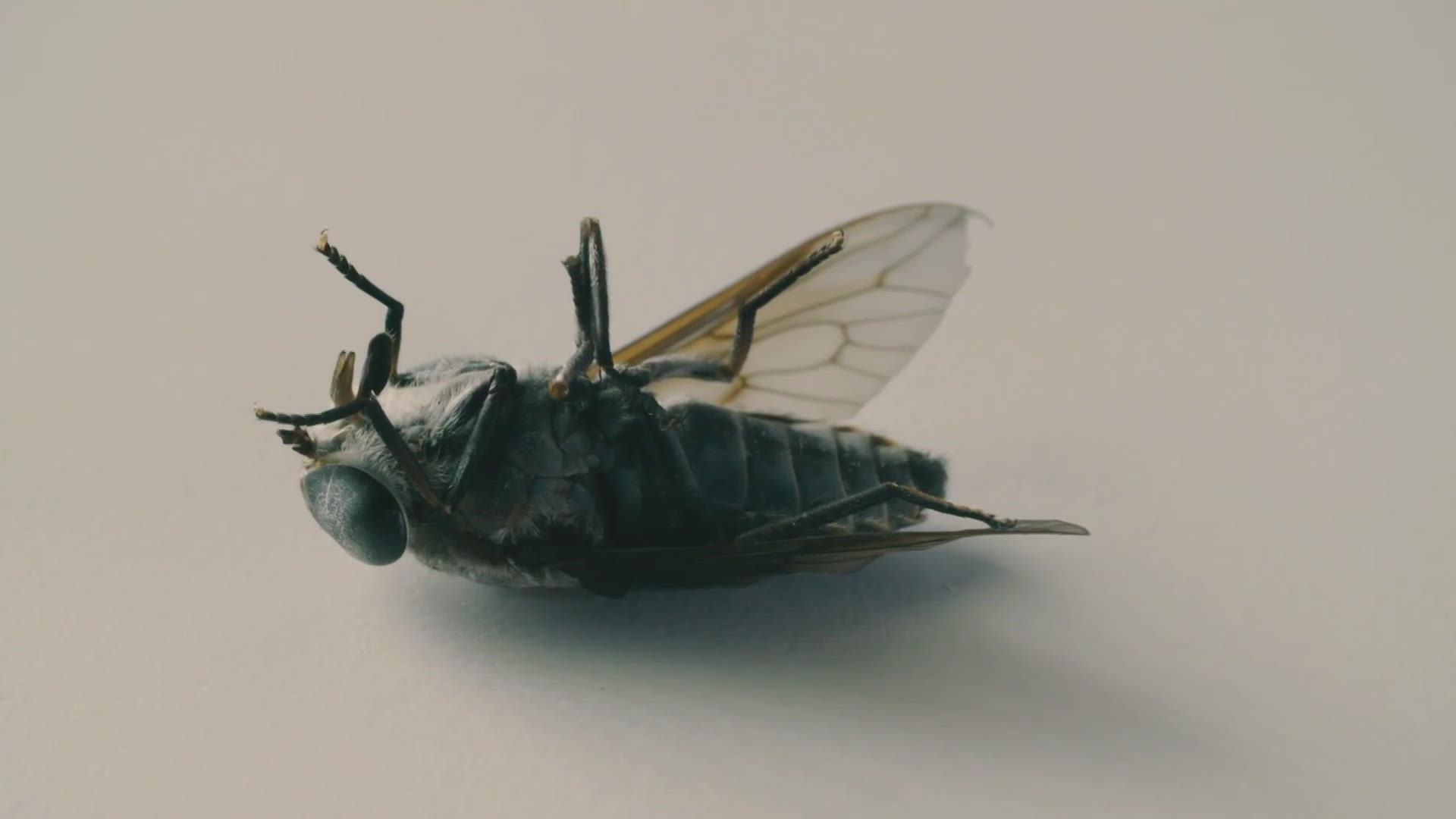PHOENIX — Blood, DNA and ballistics can all be used to help solve crimes, but what about flies?
"Everyone sees insects as creepy crawly they try to avoid them when actually they can have a plethora of information if they know what to look for," Lauren Weidner, a Forensic Sciences professor at Arizona State University, said.
Weidner and her colleague Jonathan Parrott help run the Forensic Entomology program at ASU.
"Forensic entomology uses insects and other arthropods in legal investigations," Weidner said.
Weidner and Parrott, accompanied by classes of students, spend time studying insects to provide investigators answers.
The bugs providing the most clues are blow flies.
“The main question that the majority of medical examiners ask for is that time of death or time of colonization,” Professor Parrott said.
The time of colonization often coincides with the time of death. Blow flies usually beat first responders to any scene.
“Flies can be there within minutes. I've done some research where they have been there are under in a minute,” Weidner said.
And when flies arrive, they start to reproduce. They lay eggs, which become maggots, followed by flies. Those stages can give experts a timeline of when the flies first arrived.
“And we use their development to learn how long they have been there,” Weidner said.
The challenge is understanding the variables. There are multiple species of flies. Each species has its own development cycle. In addition, the temperature can impact the life cycle of flies.
However, researchers understand those variables, and they can provide an estimated time of death - valuable information for investigators.
“If someone says I saw someone; I saw this person last night. Well, this fly is telling me you didn’t see them alive,” Weidner said.
Beyond providing an estimated time of death, flies can tell investigators if someone moved a body.
“If you see flies that are not native to the area, it can show a body has been moved,” Parrott said.
Currently, Parrott and Weidner are working with students to expand their knowledge of blow flies while working on current cases from law enforcement.
“I have four cases in the lab right now,” Weidner said.
The biggest challenge for the professors is informing law enforcement about the tool to ensure potential evidence is not disregarded as signs of decay.
“Unlike other types of evidence, this evidence is alive,” Weidner said.
And unlike humans, flies don't lie.
“They aren’t actively choosing to hide anything. So as long as we understand their biology, we should be able to weed out those lies we may be seeing from people,” Weidner said.
Up to Speed
Catch up on the latest news and stories on the 12News YouTube channel. Subscribe today.

